As the landscape of consumer behaviour is ever-evolving, brands are continuously exploring innovative ways to engage with their customers and deliver memorable experiences. In this context, Connected Packaging has emerged as a game-changing approach in the Consumer Packaged Goods (CPG) industry, offering new ways to foster robust customer relationships while understanding shifting consumer preferences and behaviour. This guide, brought to you by Appetite Creative, aims to elaborate on the concept of Connected Packaging, differentiating it from related terms, and explaining how it can be effectively utilised to enhance brand marketing strategies.
Unraveling Connected Packaging
Connected Packaging incorporates technologies like QR Codes, NFC, and RFID to enhance brand-to-consumer communication and engagement. It offers a means to extend the conversation beyond the package itself. Through Connected Packaging, brands can establish supply chain transparency, narrate their story, and boost customer interaction, thereby building robust relationships.
Differentiating Between Connected, Smart, Active, and Intelligent Packaging
Though similar at first glance, connected, smart, active, and intelligent packaging are distinct entities with unique objectives.
Connected Packaging leverages technologies like QR Codes and NFC to deliver exclusive content to customers via mobile device scans.
Active packaging, on the other hand, adds certain additives to prolong the shelf life of fresh vegetables and animal products.
Intelligent packaging employs sensors to monitor the condition of food items during transportation and storage, ensuring their freshness and right temperature.
Lastly, smart packaging is an all-encompassing term that includes connected, active, and intelligent packaging. It signifies packaging with expanded functions that transcend the scope of ordinary packaging by leveraging various technologies.
The Power of Customisation in Connected Packaging Solutions
Interactivity & Gamification: To make the customer experience more engaging, brands can incorporate interactive content or gamified experiences through their QR codes. From augmented reality experiences to fun games or quizzes, the interactive content can bring an element of excitement and surprise, driving engagement and enhancing the brand experience.
Personalisation: Personalised messages can be delivered using dynamic QR codes. Based on consumer behavior and preferences, the content delivered can be customised, offering a unique and personalised experience to each consumer. This not only improves the customer experience but also fosters loyalty.
Loyalty Programs: QR Codes and NFC tags can be used to streamline loyalty programs. Customers can simply scan to earn points, redeem rewards, or receive exclusive promotional offers. This can lead to increased customer retention and repeat purchases.
Educational Content: Brands can use Connected Packaging to educate consumers about the product, usage instructions, or even the brand’s commitment to sustainability or other values. This can help build trust and reinforce the brand’s identity.
Security Features: Advanced security features like holography can be added to the QR Codes and NFC tags to prevent counterfeiting and assure customers of the product’s authenticity.
Trial & Feedback: Brands can encourage product trial and gather direct customer feedback through Connected Packaging. They can offer samples of new products or ask for reviews, making customers feel valued and heard.
Social Media Integration: By linking to social media pages or user-generated content, brands can foster a sense of community and encourage customers to share their experiences, thus creating organic brand promotion.
These aspects of customisation and engagement through connected packaging can truly enhance the brand’s relationship with its consumers, making their experience more meaningful and engaging.
Appetite Creative’s Case Study: Woodlands Dairy Sustainability Campaign
In a sustainability campaign led by Appetite Creative, Tetra Pak, and Woodlands Dairy, consumers scanned QR codes on Tetra Pak cartons to access an educational quiz on sustainability. Woodlands Dairy’s sustainability initiatives were effectively communicated, particularly to the targeted demographic of mothers, who constituted 78% of participants.
The campaign led to rapid growth and increased engagement, largely credited to strategic social media utilisation, with Facebook providing significant traffic. It achieved a below-average bounce rate of 18% and an average user engagement time of 2 minutes and 14 seconds! This was boosted by the allure of weekly shopping voucher prizes, adding an interactive and rewarding element to the campaign.
To learn more about this, please see the Great Connected Packaging Campaigns article.
Conclusion
In the ever-evolving world of consumer behaviour, brands need to constantly innovate to remain relevant and connected to their customers. Connected Packaging offers a powerful solution, enabling brands to extend their engagement beyond the product itself, building stronger relationships with consumers. The successful application of Connected Packaging in the Woodlands Dairy campaign, with impressive engagement metrics, underscores its potential as a powerful tool for enhancing brand marketing strategies and strengthening consumer relationships.
